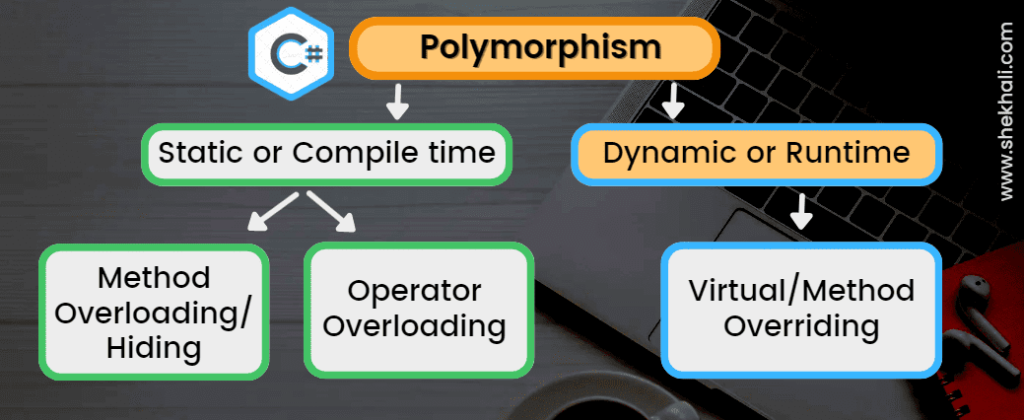std::any多态实现:策略模式的新视角
发布时间: 2024-10-22 18:12:05 阅读量: 30 订阅数: 50 


# 1. std::any多态实现的基础概念
在现代C++编程实践中,类型擦除是一种常用的技术,允许我们编写能够处理不同类型的代码,而无需知道具体的类型信息。std::any是C++17中引入的一个类型擦除容器,它能够存储任意类型的值,为多态实现提供了便利。std::any的最大优势在于能够替代void指针的使用场景,同时避免了运行时类型识别(RTTI)的开销,增强了类型安全。在本章中,我们将探讨std::any的基础概念和用法,并展示它如何实现多态。
```cpp
#include <any>
#include <iostream>
#include <string>
int main() {
std::any value = 42; // 存储一个int类型值
value = std::string("Hello World"); // 替换为存储一个std::string类型值
if(value.has_value()) {
if(value.type() == typeid(int)) {
std::cout << std::any_cast<int>(value) << std::endl;
} else if(value.type() == typeid(std::string)) {
std::cout << std::any_cast<std::string>(value) << std::endl;
}
}
return 0;
}
```
在上述代码示例中,我们展示了如何使用std::any存储不同类型的数据,并在需要的时候检查其类型并安全地转换回原始类型。这为策略模式等设计模式的实现提供了更灵活的解决方案。
# 2. 策略模式的理论与实践
### 2.1 策略模式的基本原理
#### 2.1.1 策略模式的定义和组成
策略模式是一种行为设计模式,它允许算法的定义、封装和替换,从而使得算法可以在运行时互相替换。策略模式定义了算法家族,并让这些算法可以互换使用,以满足特定情境的需求。其主要组件包括:
- **策略(Strategy)**:定义了一组算法,封装了这些算法,并提供了算法的接口。
- **具体策略(Concrete Strategies)**:实现了策略接口的各个算法。
- **上下文(Context)**:使用策略接口并维护其具体策略的引用。
策略模式的目的是通过定义一系列算法,使它们可以互换使用。该模式通过上下文来使用这些算法,上下文的行为依赖于它所使用的策略。
#### 2.1.2 策略模式的优势与应用场景
策略模式的优势主要体现在:
- **封装变化**:算法的变更可以集中管理,客户代码不会受到影响。
- **灵活多变**:运行时可以根据需求动态地切换算法。
- **消除冗余的条件语句**:通过使用多态,可以避免在代码中使用多重条件语句。
策略模式主要适用于以下场景:
- 有多个行为或算法,且它们之间可以互换。
- 需要安全地封装算法的实现细节。
- 客户代码不依赖于具体的算法实现。
### 2.2 策略模式的代码实现
#### 2.2.1 策略接口与具体策略类的设计
在设计策略模式的代码时,首先定义一个策略接口,然后实现具体策略类。以下是一个策略接口和几个具体策略类的代码示例:
```cpp
#include <iostream>
#include <memory>
// 策略接口
class Strategy {
public:
virtual ~Strategy() = default;
virtual void algorithmInterface() const = 0;
};
// 具体策略A
class ConcreteStrategyA : public Strategy {
public:
void algorithmInterface() const override {
std::cout << "ConcreteStrategyA is executing algorithmInterface" << std::endl;
}
};
// 具体策略B
class ConcreteStrategyB : public Strategy {
public:
void algorithmInterface() const override {
std::cout << "ConcreteStrategyB is executing algorithmInterface" << std::endl;
}
};
// 具体策略C
class ConcreteStrategyC : public Strategy {
public:
void algorithmInterface() const override {
std::cout << "ConcreteStrategyC is executing algorithmInterface" << std::endl;
}
};
```
#### 2.2.2 上下文类的实现
上下文类负责使用策略接口,它可以根据需要切换策略:
```cpp
// 上下文
class Context {
private:
std::unique_ptr<Strategy> strategy_;
public:
explicit Context(std::unique_ptr<Strategy> strategy) : strategy_(std::move(strategy)) {}
void contextInterface() const {
strategy_->algorithmInterface();
}
};
```
#### 2.2.3 策略模式的组合使用
通过组合使用策略模式,可以在运行时动态地切换算法:
```cpp
int main() {
Context context(std::make_unique<ConcreteStrategyA>());
context.contextInterface();
context = Context(std::make_unique<ConcreteStrategyB>());
context.contextInterface();
context = Context(std::make_unique<ConcreteStrategyC>());
context.contextInterface();
return 0;
}
```
### 2.3 策略模式在现代C++中的应用
#### 2.3.1 标准库中的策略模式实例
现代C++标准库中广泛使用了策略模式的设计思想。例如,`std::sort` 函数就使用了策略模式,其比较函数可以作为参数传递,以此来实现不同的排序算法:
```cpp
#include <algorithm>
#include <vector>
#include <iostream>
int main() {
std::vector<int> numbers = {3, 1, 4, 1, 5, 9, 2, 6, 5, 3, 5};
std::sort(numbers.begin(), numbers.end()); // 默认升序排序
// 自定义比较函数
std::sort(numbers.begin(), numbers.end(),
[](int a, int b) { return a > b; }); // 降序排序
for (int n : numbers) {
std::cout << n << ' ';
}
std::cout << std::endl;
return 0;
}
```
#### 2.3.2 策略模式与std::function和std::any的结合
在现代C++中,结合`std::function`和`std::any`,策略模式可以变得更加灵活,因为它允许将任何可调用的实体作为策略传递:
```cpp
#include <any>
#include <functional>
#include <iostream>
#include <vector>
void strategyFunction() {
std::cout << "This is a function-based strategy" << std::endl;
}
class StrategyClass {
public:
void operator()() const {
std::cout << "This is a class-based strategy" << std::endl;
}
};
int main() {
// 使用std::function来存储可调用策略
std::function<void()> strategy1 = strategyFunction;
strategy1(); // 调用函数类型的策略
StrategyClass strategy2;
std::function<void()> strategy2_copy = strategy2;
strategy2_copy(); // 调用对象类型的策略
// 使用std::any存储任何类型的策略
std::a
```
0
0





